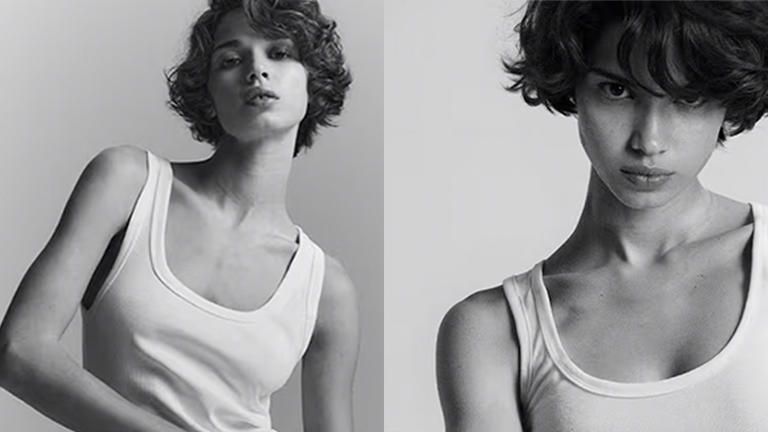Spot the difference! Fashion brands embrace AI to digitally clone models
H&M's embrace of AI-generated images is causing concern among some fashion experts. The increasing use of AI in fashion is raising questions about its implications. Critics are worried about the impact of this trend on the industry. The debate over AI-generated images in fashion continues to grow. Stay tuned for more updates on this topic.

In two photographs taken for fashion retailer H&M, model Mathilda Gvarliani is seen posing in a white tank top and jeans. The images look like takes from the same shoot, but one of the photos shows the real Gvarliani, and the other is an artificially manipulated image of her. Published this week in The Business Of Fashion, an industry news outlet, one of the images shows Gvarliani clutching the waistband of her jeans, and the other shows her “digital twin” with her arms crossed and staring into the camera.
Across the two images reads a quote by Gvarliani: “She’s like me, without the jet lag.” Gvarliani is one of more than two dozen models that H&M is working with this year to create digital replicas for use on the company’s social media platforms and in its marketing campaigns, the publication reported.
The Impact on Fashion Industry
H&M, a Swedish retailer, is the latest company to pursue a trend that has unsettled some fashion industry insiders. As the use of images generated by artificial intelligence spreads, critics have raised concerns about the impact on models and other independent contractors, such as hairstylists and makeup artists, who are part of the labor force that makes a photo shoot happen.
The company is in the exploratory phase of the project, said Hacan Andersson, a spokesperson for H&M. “We are merely exploring what is possible, and we are doing so in close collaboration with other creatives within the industry, agencies and the models themselves – who are in full control of when the ‘digital twin’ would be used, and will of course get paid when it is being used,” he said.
Legislation and Protection
Jorgen Andersson, the chief creative officer of H&M, said that the company would retain a “human-centric approach” in its use of the technology. The Fashion Workers Act, a new law that takes effect in June in New York state, is expected to address some of the concerns about the use of AI by providing protections to models, including requiring pay transparency and control over digital replicas.
New York state senator Brad Hoylman-Sigal, a cosponsor of the bill, said the labour law would “protect fashion models from being financially abused and having their images used without their consent”. Other states and some European countries have laws pertaining to the rights of individuals over their digital replicas, but the New York law is specifically geared toward models.
Concerns and Advocacy
Some models have complained about discovering unknown faces photoshopped onto their bodies, or of not having control of their finances. Sara Ziff, a former model and the founder of the Model Alliance, an advocacy group, said, “It really raises questions about consent and compensation and also has the potential to replace a host of fashion workers.”
The alliance, which provided input for the law in New York, said that there have been cases where models have had their generative AI images used without their knowledge or consent, and without receiving compensation.
Model Alliance's Response
In its newsletter, the Model Alliance said that it was evaluating the H&M plan, which includes examples of other models next to their digital clones while featuring upbeat quotes, like the one attributed to Gvarliani about her digital twin being a version of her.
Asked whether the models had really said those words, an H&M spokesperson said: “I can confirm they are real quotes from the models.”
This article originally appeared in The New York Times.

